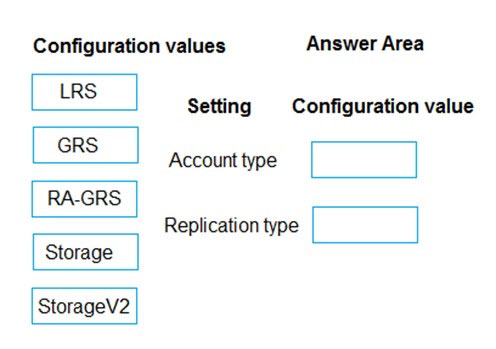

DRAG DROP -
You need to provision the polling data storage account.
How should you configure the storage account? To answer, drag the appropriate Configuration Value to the correct Setting. Each Configuration Value may be used once, more than once, or not at all. You may need to drag the split bar between panes or scroll to view content.
NOTE:
Each correct selection is worth one point.
Select and Place:

STH
Highly Voted 5 years, 6 months agodfrp92
4 years, 11 months agoAvinash75
3 years, 11 months agoSAMBIT
Highly Voted 5 years, 3 months agoSachinKumar2
5 years, 2 months agoSheShanD
4 years, 11 months agoUday0809
Most Recent 4 years, 6 months agolingjun
4 years, 6 months agodatachamp
4 years, 7 months agodumpsm42
4 years, 6 months agohart232
4 years, 8 months agoLeandroAmore
4 years, 11 months agoakn1
4 years, 11 months agoAnamitra
5 years agosamok
5 years, 3 months agoAbbas
5 years, 5 months agotes
5 years, 5 months ago